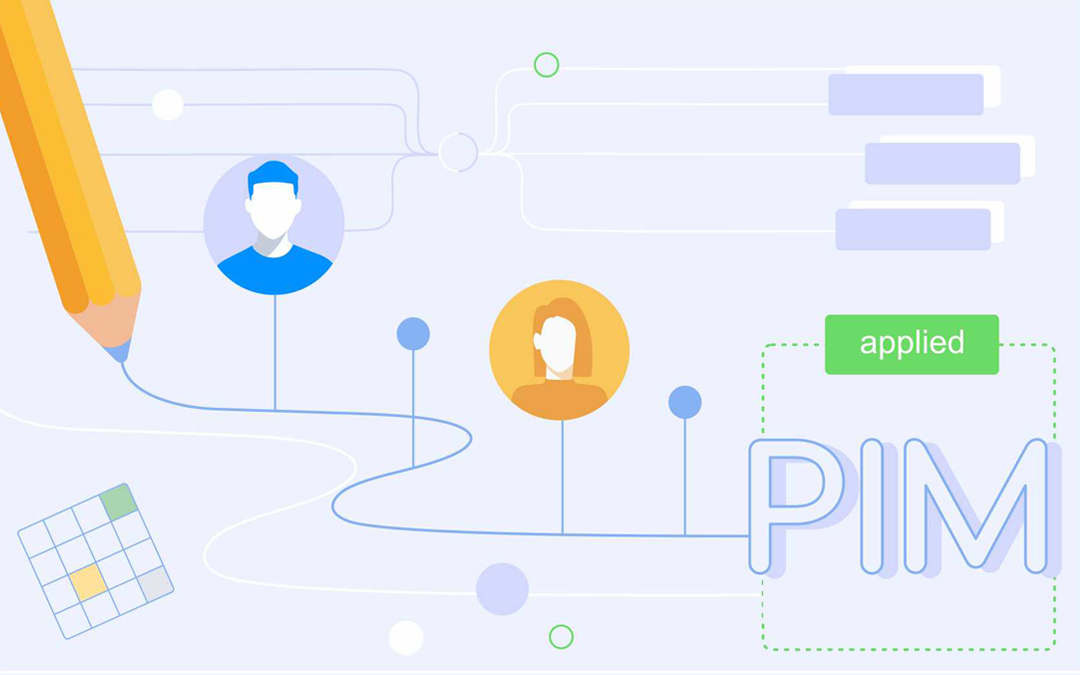Every project management activity doesn’t exist in isolation – they are all related to and dependent on each other, may have competing requirements and/or shared resources. And if there are multiple projects in the environment, the need for proper coordination of all their processes and activities increases exponentially.
To make sure that the process of orchestrating projects across the whole environment runs like clockwork, project integration management should be applied.
In this article, we’ll provide an overview of this process, and let you know how project managers can make it more simple and efficient by utilizing a resource management solution.
What is Project Integration Management?
According to the Project Management Body of Knowledge, project integration management involves identification and coordination of various PM processes and activities throughout the whole project lifecycle. In particular, it involves making resource allocation decisions, finding compromises between competing objectives, keeping track of project documents, and managing interdependencies between the following PM elements:
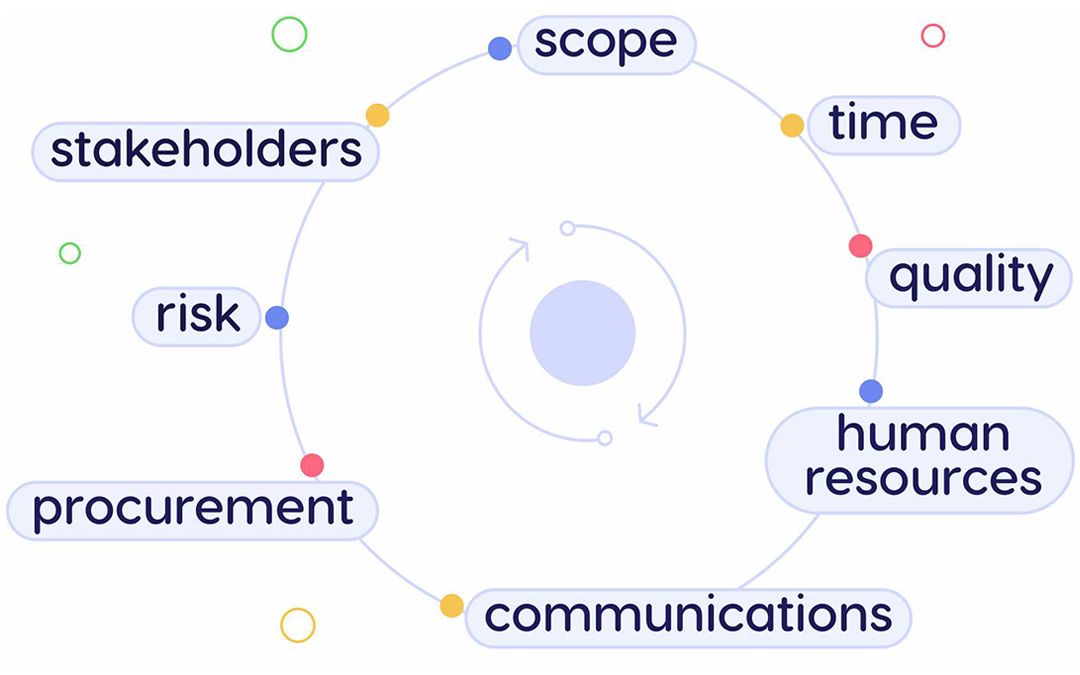
Project integration management is included into the 10 PM Knowledge Areas, which means that it’s a standard applicable for most projects in most environments.
There are two major benefits of project integration management for the project workflow.
First, it helps keep projects on track. Thanks to coordination of all project processes, it’s much easier to react to changes properly and timely spot any bottlenecks or risks that can threaten the workflow.
Second, it facilitates more effective decision-making. Thanks to considering every project process and activity in conjunction with the other ones, a project manager can see how they affect each other and use this information when making decisions.
Project integration management consists of a series of activities that correspond to the main phases of a project lifecycle (initiation, planning, execution, monitoring/control, and closure). Let’s examine them in detail in the section below.
Steps of Project Integration Management
Step 1. Develop a project charter
A project charter is a document that establishes an agreement between performing and requesting organizations, and formally validates the existence of a project. Once this document is created and approved, a project manager can start work on project planning and implementation. A project charter is based on the following documents.
- Project statement of work describes products/services to be delivered and consists of the following parts: the business need for creating the product/services, product scope description, and a strategic plan that outlines strategic vision, goals, and objectives.
- A business case aims to answer the question: is the project worth the investment from the business point of view? It’s usually based on the analysis of one or several factors: market demand, customer request, organizational need, social need, legal requirement, environmental impacts, or technological advance.
- Agreements determine initial intentions for a project: e.g., contracts, letters of intent, service level agreements, or any other written agreements.
- Enterprise environmental factors: government and industry standards, organizational culture, marketplace conditions.
- Organizational process assets cover policies, templates, historical information and lessons learned.
As a result, a project manager can come up with the final document that outlines the following aspects: project justification, its requirements and objectives, constraints and main risks, stakeholders, budget, and milestone schedule.
Step 2. Create a project management plan
A project management plan is a fundamental document that represents how a project will be implemented, monitored, and controlled. In other words, it’s the basis for all project work. A project management plan is a consolidation of three baselines (time, schedule, and scope) and all subsidiary plans which are presented in the image below.
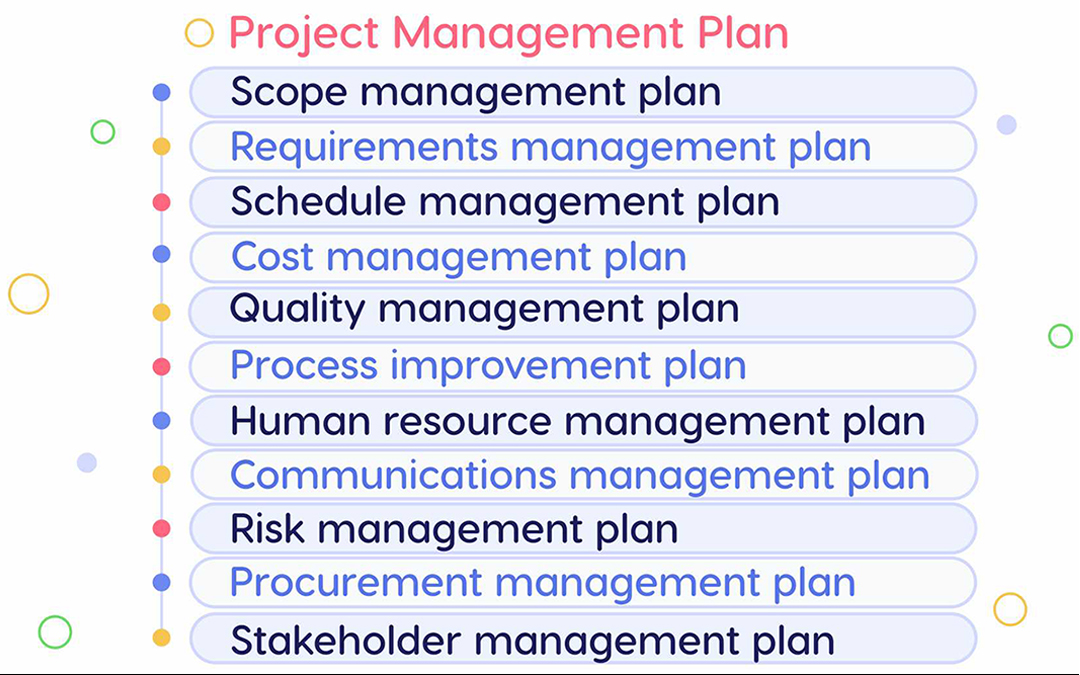
It may also include a change management plan, description of how the project work will be executed (an implementation plan), requirements for communication with stakeholders, or other documents required by specificity of a project.
A project management plan is developed on the basis of previously created project charter, project templates, historical data and lessons learned, government or industry standards.
A project management plan is usually baselined and can only be changed through a formal change control process.
Step 3. Direct and manage project work
The main purpose of this step is to ensure performance of all the activities outlined in the project management plan together with implementing approved changes with the aim of meeting the project’s objectives. The output of this step is as follows:
- creating project deliverables (i.e., tangible components of project objectives),
- obtaining data regarding work performance (e.g., actual costs and durations, key performance indicators, the number of change requests, and other data reflecting the state of the workflow),
- change requests (for modifying deliverables, documents, or baselines),
- updates to the project management plan,
- project document updates (requirements, project logs, risk and stakeholder registers).
Step 4. Monitor and control project work
This step involves reviewing, tracking, and reporting the project progress – whether it’s going to meet the previously defined project objectives. Monitoring implies collecting, measuring, and distributing performance information, which gives insight into project health and helps identify any bottlenecks. Control is about deciding on corrective or preventive actions.
This step is implemented through the following activities:
- Comparing actual performance with the project management plan,
- Assessing performance to find out whether any corrective/preventive actions are required,
- Detecting new risks and monitoring the existing ones,
- Making forecasts to update current cost and schedule information,
- Keeping an eye on the implementation of approved changes,
- Creating reports on project status and progress.
The output of these activities are work performance reports, updates to the project management plan and project documents as well as change requests. As a result, stakeholders can have an idea of the current state of a project as well as budget, schedule, and scope forecasts based on comparing the progress with the baselines.
Step 5. Perform integrated change control
It’s impossible to manage a project without making changes – they can be requested by any stakeholder. But when changes are not documented and managed, a project can be exposed to risks. Integrated change control involves not only reviewing all change requests, but also approving and managing changes to deliverables, project documents, project management plan, or organizational process assets (policies, templates, etc.).
Every change request, even those expressed orally, must be recorded and included in the change management system. In turn, every documented change request must be approved or rejected by a project manager (or project sponsor).
Read more about coping with changing requirements in our blog post: Changing Requirements in Project Management: How to Stay on Track.
Step 6. Close the project
Closing the project means wrapping up all the activities across all the project management process groups. It’s the formal ending of project work that ensures that all the planned activities have been completed, the project has met its objectives, and provides the project team with lessons learned. To ensure project completion, a project manager compares the completed project scope with the scope management plan.
The output of this step is the delivered product (or service), historical information and lessons learned, and various project files (e.g., a project management plan, a risk register).
Having reviewed these steps, you may be wondering whether there’s actually a difference between project management and project integration management. The difference between them is as follows:
- project management means applying specific knowledge, skills, tools, and techniques to performing a set of project activities to meet the defined project requirements;
- project integration management is the coordination of all these project activities.
So the main difference of project integration management is that it oversees all elements of a project along with relations between them to ensure the effectiveness and success of project management effort.
Project integration management is a comprehensive process that involves dealing with large volumes of data, compiling and analyzing various documents, keeping track of numerous processes, assessing performance, etc. This poses the need for a centralized system that would make project integration management simple and effective. This is where a resource management solution can assist. Let’s examine which functions it has and how they can be used in this process.
Leveraging a Resource Management Solution to Simplify Project Integration Management

Performing efficient project integration management in large project-based organizations is most difficult and requires a smart system capable of integrating processes within every project and in the whole environment. Epicflow, a multi-project resource management tool, offers such a solution. Let’s review some of the opportunities it provides for proper project integration management throughout the whole project lifecycle.
Analyzing historical data
Historical data is widely used at the project initiation and planning phases: e.g., it allows a project manager to make the right estimates and set realistic expectations regarding teams’ performance. In Epicflow’s Historical Load Graph, you can analyze the output produced by the project team against their capacity and understand how much work has been completed on time and behind the schedule. This data will provide you with the idea of the effectiveness of your previous estimates and work distribution between the team members.
Using templates from previous projects
When you intake a project similar to the one you’ve managed before, you don’t have to enter its components (tasks, summaries, etc.) into the system from scratch. In Epicflow, they can be stored in the Module Library and used when necessary, which will save your time for more important work.
Setting the right priorities across the project environment
Efficient management of multiple projects is impossible without the right prioritization. Epicflow analyzes project-related data across the whole project environment and provides each team member with an automatically prioritized task list.
Monitoring the state of the workflow
Monitoring project work is one of the components of project integration management, which is not an easy task in a multi-project environment. In Epicflow, the state of all projects is easily traceable. In addition, if there are any problem points hampering the flow, the system will inform you of the reasons. For example, in the Bubble Graph, your project environment is presented as a set of bubbles flowing against the multicolored background, where each color indicates a project’s health. You can either assess the state of the whole environment or review the details of each particular project (spent and remaining time and budget). It makes it intuitively easy for understanding and analysis.
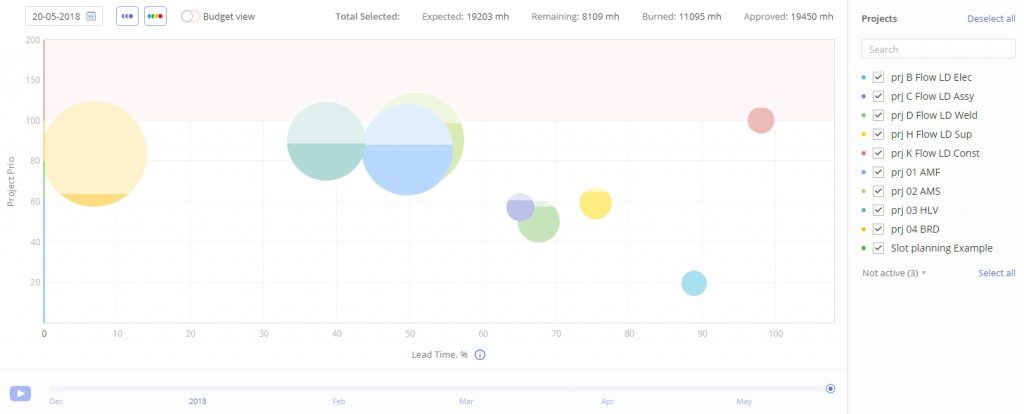
Find out more details about this feature: Bubble Graph: Critical Chain Fever Chart Re-Imagined
Tracking progress
Tracking teams’ progress toward project delivery is an important part of a project manager’s work. As compared to the traditional approach to assessing project progress, we at Epicflow pay closest attention to the data on resources’ progress, as it’s the most reliable indicator of project health. In our system, you can assess your teams’ work from multiple perspectives. First, the above-mentioned Historical Load Graph shows how efficient your people have been in relation to their capacity. Second, you can monitor the completed and remaining amount of project work on the Epicflow’s Burnup Chart. Finally, in the Timesheet, you can track the output produced by a group or individual team members over a certain period.
Running simulations
AI-driven scenario analysis is Epicflow’s unique feature that may be required at any phase of the project lifecycle. For example, if there are change requests and a project manager isn’t sure how to handle them, you think of intaking one more project but don’t know whether your teams will cope with new tasks, or you need to find the most appropriate risk response. What-if Analysis is a reliable advisor under conditions of uncertainty that shows the consequences of changes made to the project environment.
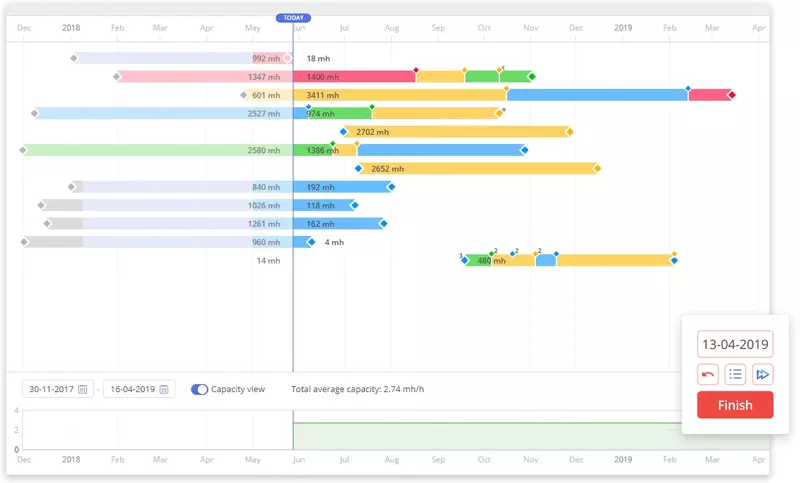
Generating reports
Last but not least is automatic report generation. When you have a dozen projects in the pipeline, collecting necessary data and compiling reports is a cumbersome and time-consuming task. Instead, with Epicflow, it can be performed in a few clicks. You can choose one of the available time periods (current or previous month), and the system will provide you with the necessary report, which will essentially save your time and effort.
Epicflow’s functionality is not limited to the above-mentioned features. You can learn more about our solution by booking a consultation with our experts.
